From the Archives: Blast in Sylmar water tunnel kills 17
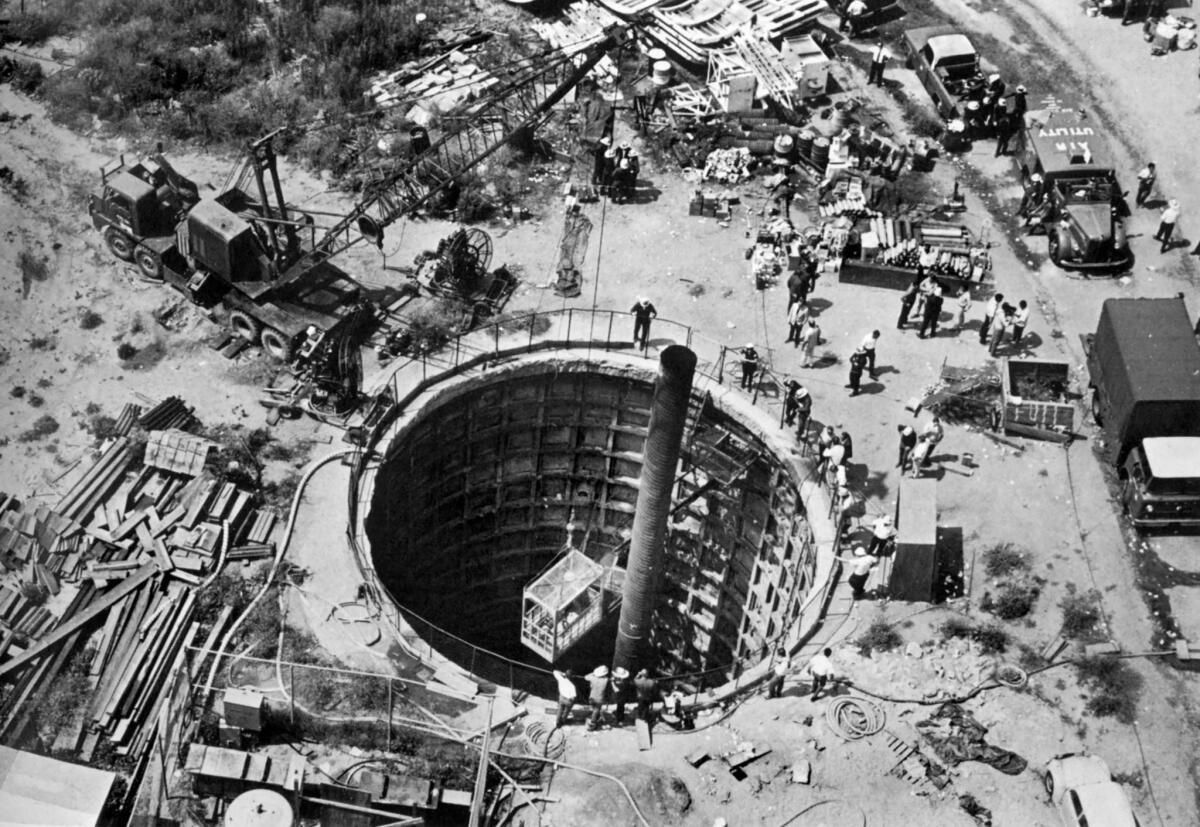
On June 24, 1971, 17 workers were killed by a methane gas explosion in a Metropolitan Water District tunnel beneath Sylmar.
Staff writer Dial Torgerson reported in the June 25, 1971, Los Angeles Times:
A pocket of natural gas exploded with an earth-shaking roar early Thursday in the midst of a crew of workers drilling a Metropolitan Water District tunnel 250 feet beneath Sylmar. …
The explosion was the second in two days at the MWD’s San Fernando Tunnel, which will take the State Water Project flow from near Sylmar to a covered aqueduct line 5.5 miles away.
Both explosions were blamed on methane, the natural gas found in oil fields. Four men were injured in the blast Wednesday. One of them was treated, went back to work, and died in Thursday’s explosion.
The tunnel is being constructed by Lockheed Shipbuilding and Construction Co., a Seattle-based subsidiary of Lockheed Aircraft Corp. …
The explosion turned the 21-foot-high tunnel into an inferno of blazing gases. The impact of the blast raced toward the tunnel portal.
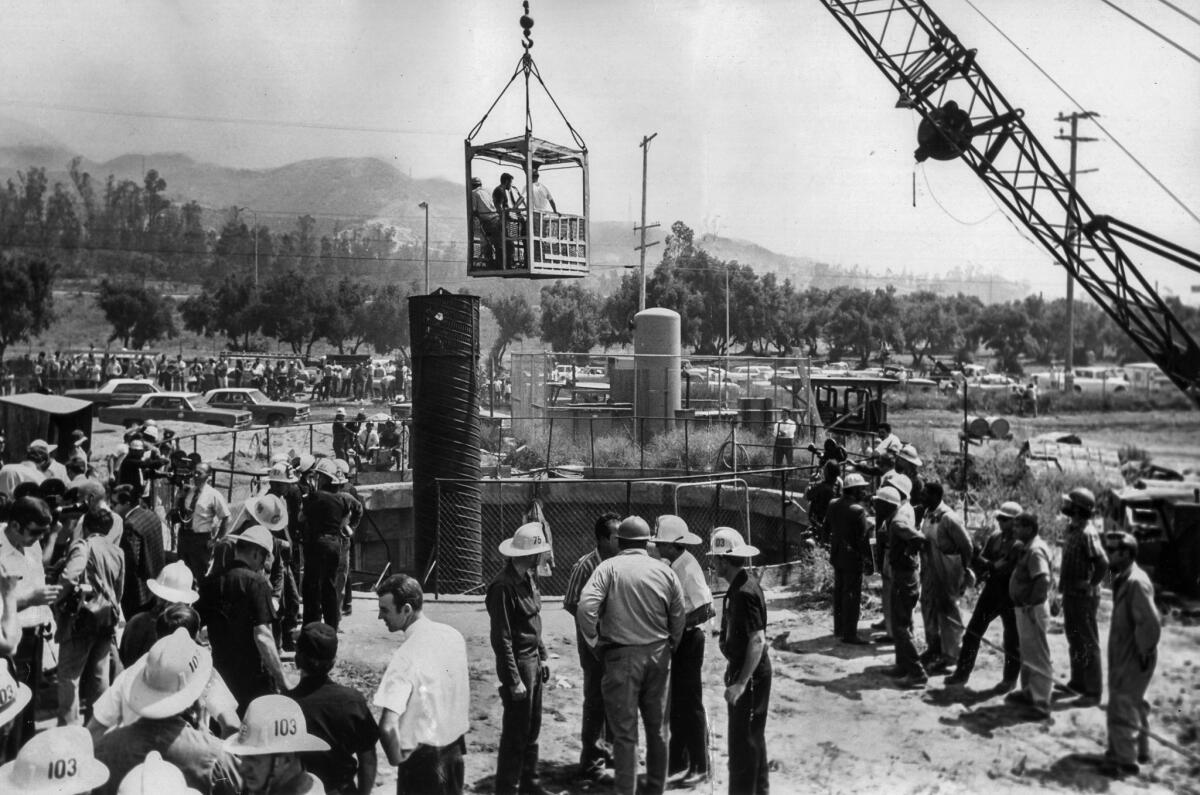
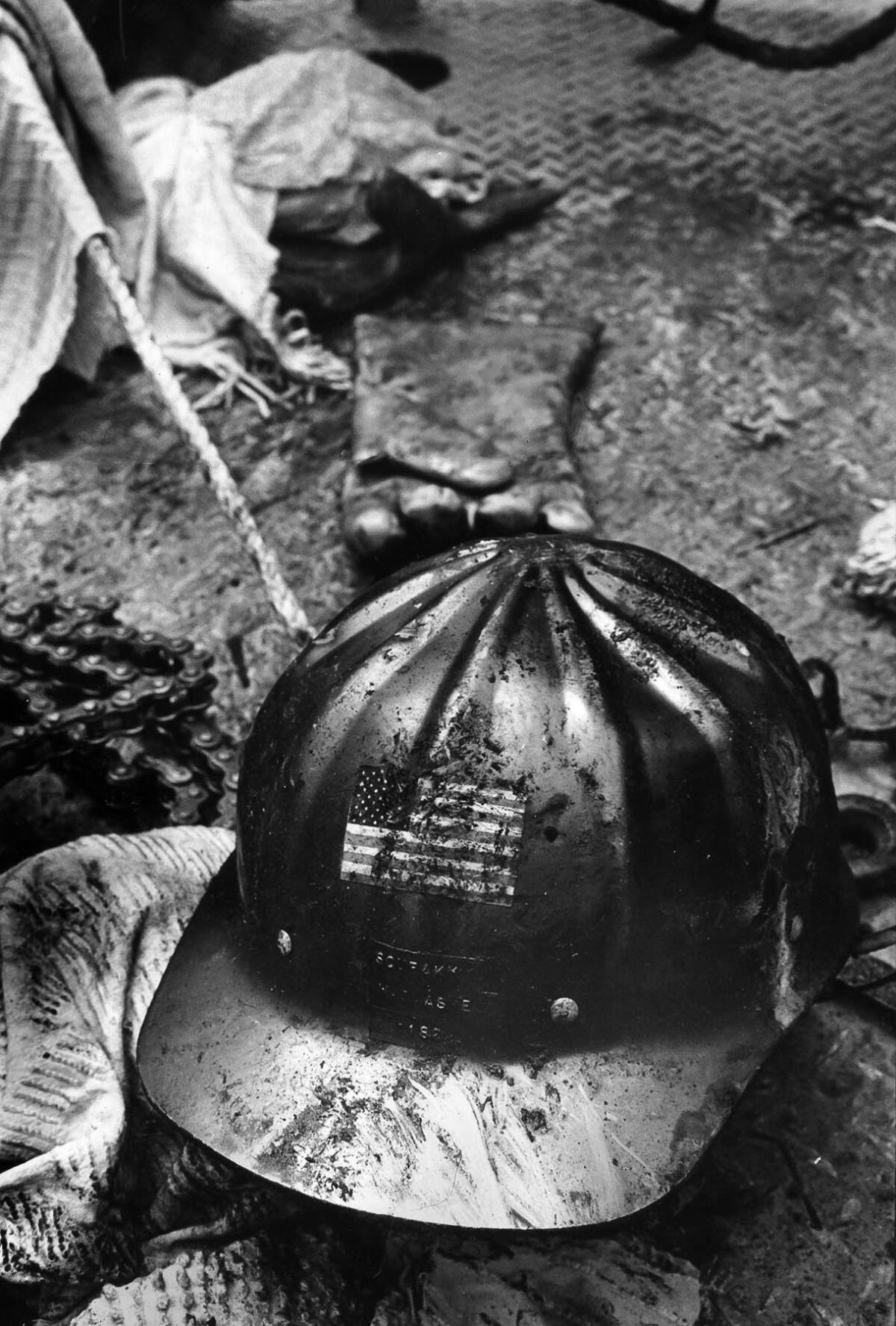
Six hundred feet from the face of the tunnel, Louis Renteria, 51, was working at a switch on the narrow gauge rail line. The blast hurled him to the tunnel floor, knocking him unconscious. …
Ralph Brissette, 33, of Pacoima, who had been loading slag onto cars at the rear of the work area, was knocked down, but was able to stagger, semiconscious, toward the east portal more than four miles away.
One thousand feet from the explosion, Paul (Dutch) Badgley, 63, a veteran of 45 years in mines, was blown from the small yellow transporter, an electric locomotive for the cars which remove slag. He staggered to his feet. It was, he said later, a blast “like a heavy dynamite explosion.”
From down the tunnel he could hear the screams of the men trying to escape the holocaust. He jammed his motor in gear and drove toward the trapped and dying men through darkness so thick he could see only inches.
Six hundred feet from the tunnel’s end, he found Renteria staggering in the smoky darkness.
He took Renteria to safety. Three more times, Badgley, without oxygen, tried to fight his way down the tunnel. The second time he could still hear men crying for help. He backed out until he could get a breath of air, and tried again. This time, and the last time, he heard no sound. …
Other rescuers, with fresh oxygen, made their way into the tunnel. It was, said Fire Department Division Chief Robert Radke, “a raging inferno – everything burning, pieces falling from the ceiling, smoke so thick you couldn’t see your hand before your face.” Two Lockheed workers, John Wallace and John Rathbun, were 300 feet from the site of the blast and nearly running out of oxygen with they heard a shout: “Help.”
In the darkness they found Brissette. They put him on a car and headed for the Gate Shaft.
The steel basket lowered by the crane was waiting at the bottom of the shaft. Brissette was lifted from the concrete-lined opening, placed in an ambulance, barely conscious, and taken to Tacoma Lutheran Hospital.
He responded quickly to emergency treatment for shock and smoke inhalation.…
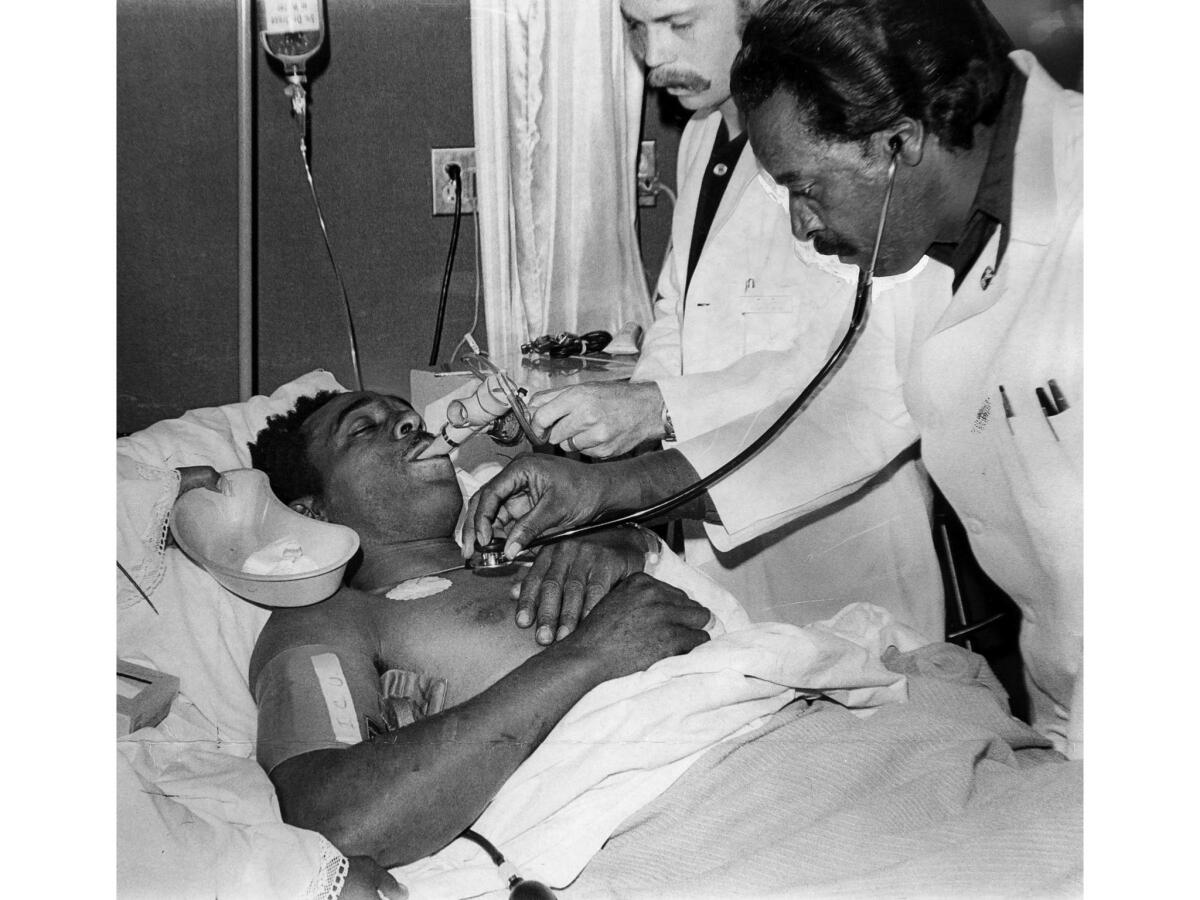
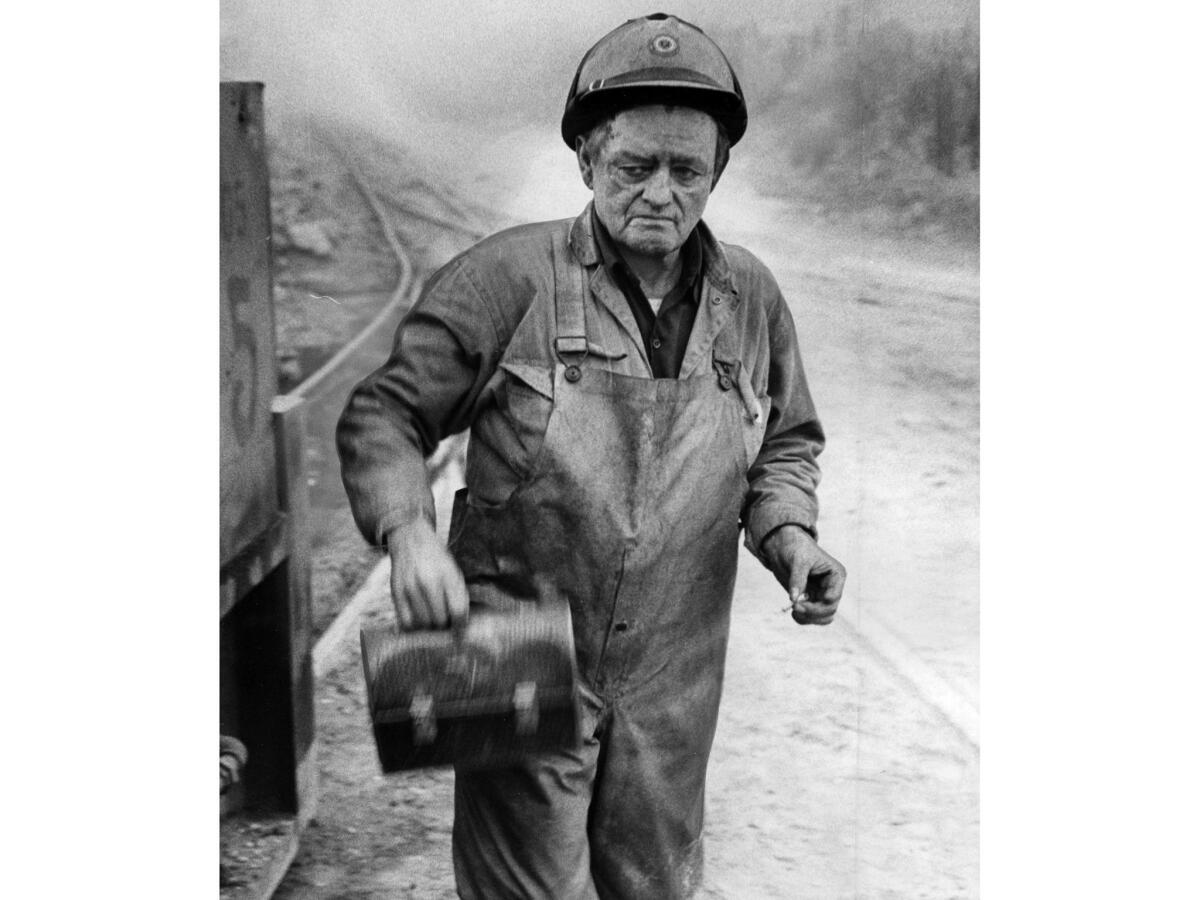



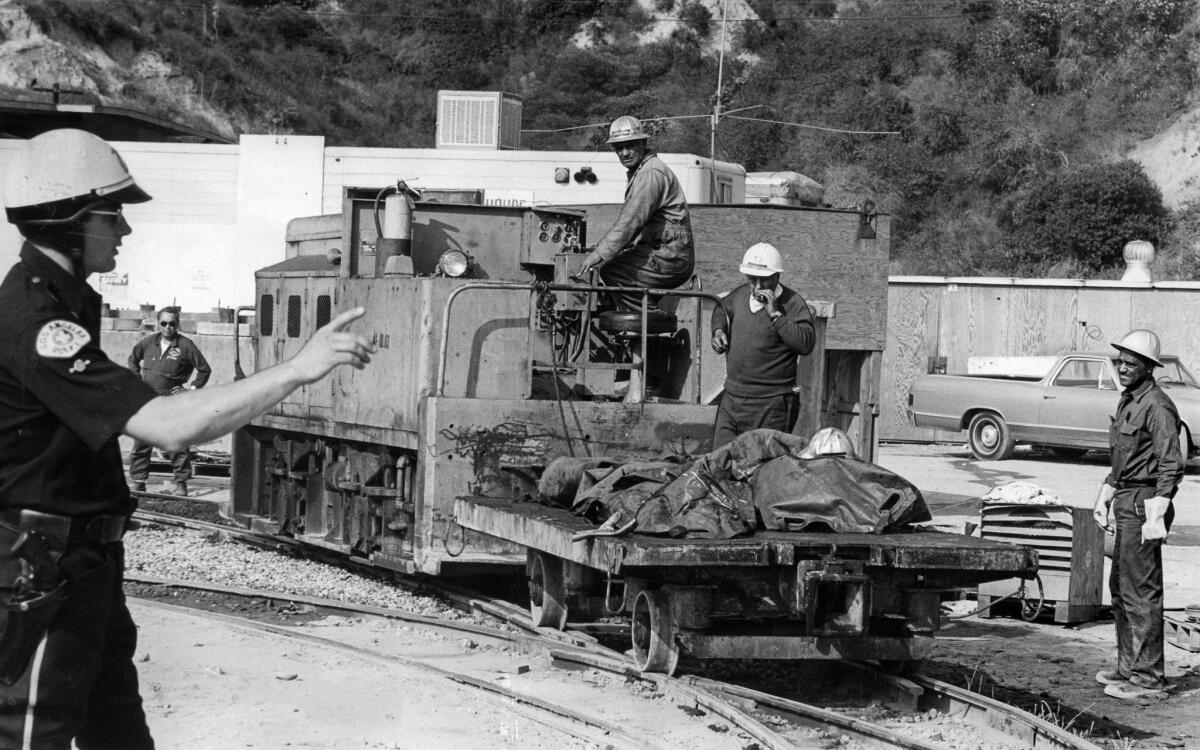
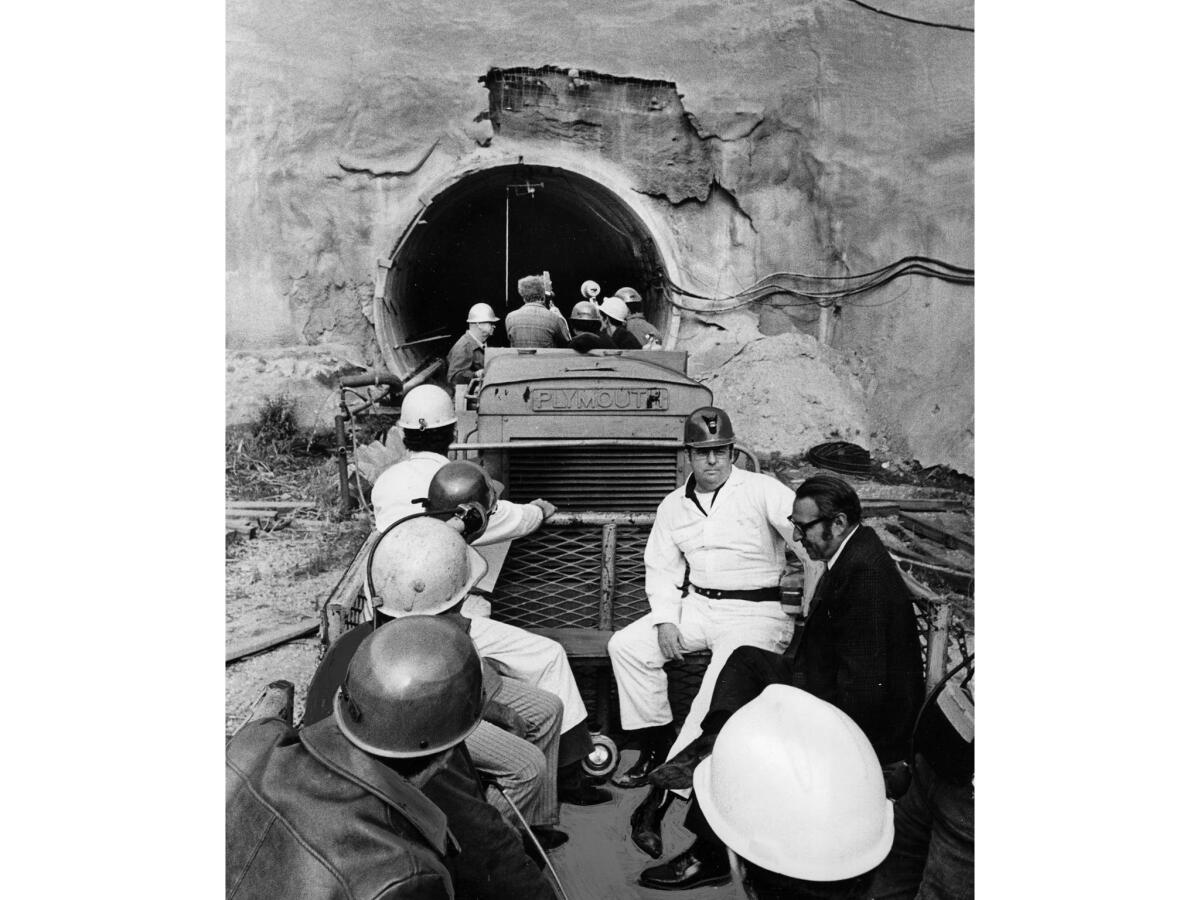
The Lockheed Shipbuilding and Construction Co. faced charges on negligence and safety violations stemming from the Sylmar tunnel explosion. Judge George Trammell III ordered a film made after ruling a tour of the tunnel was too dangerous for the jury. The trial lasted 54 weeks.
The July 28, 1973, Los Angeles Times reported, “Lockheed was found guilty of 16 counts of gross negligence and 10 counts of violations of state industrial safety code.”
In December 2013, Ralph Brissette attended a memorial service at Union Station for the 17 workers killed in the explosion. At the service, a four-foot tall monument was unveiled.
This post was originally published on June 24, 2015.